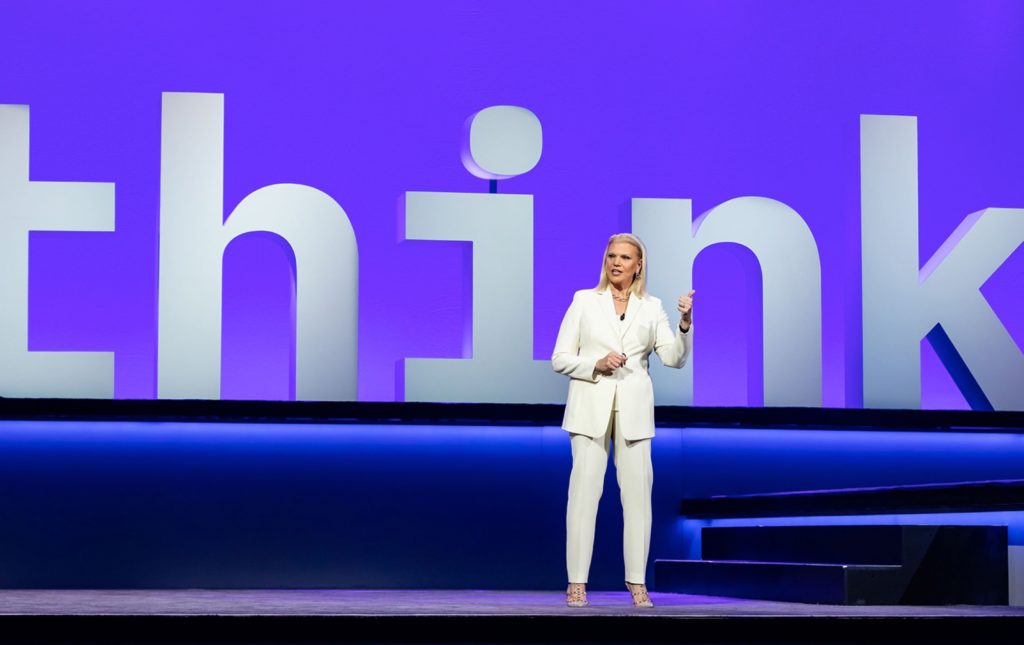Brand reinforcement is high on the agenda at IT vendor customer and partner conferences. After all, the vendors have access to big venues, professional production services and crowds of media on hand so explaining themselves and their strategies is natural.
However, the process varies widely from vendor to vendor in terms of value. More than a few opt for squishiness over substance and others prefer vagaries over concrete talking points. But some use the events to clarify their current positions, explicate the reasoning behind challenging decisions and detail how they are helping the organizations they serve achieve desired goals.
Good examples of this latter approach were plentiful at IBM’s recent Think conference in San Francisco. During Think 2019’s four jam-packed days, the company’s senior executives clearly laid-out what IBM is doing and why its efforts are meaningful to its customers and partners.
Let’s consider a few of Think 2019’s key happenings and what they said about the current and future state of IBM.
Rometty opens Chapter 2
The centerpiece of any vendor conference is the CEO’s keynote, and Think was no exception. IBM chairman and CEO Ginni Rometty held the spotlight with the help of some major league customers’ execs, underscoring the company’s recent achievements and future focus areas. The core of her presentation focused on what Rometty called Chapter 2 – a next stage of innovation in which organizations consciously move from “random acts of digital” and experimenting with emerging technologies, like artificial intelligence (AI), to true business transformation.
How is IBM facilitating Chapter 2? Initially with a pair of notable cloud offerings. The first includes a new Cloud Integration Platform and IBM Global Service offerings for hybrid cloud migrations. These were interesting but largely eclipsed by Watson Anywhere, an initiative that will enable customers to leverage IBM’s Watson AI solutions wherever their data resides. Watson Anywhere flows out of the Cloud Private for Data (ICP for Data) analytics solutions IBM recently announced that enable customers to deploy workloads on any cloud that supports Red Hat’s OpenShift containerization technology.
Prior to this, IBM Cloud was the only public cloud supporting Watson AI workloads and projects so Watson Anywhere represents a substantial (for IBM) and beneficial (for clients) move. At the same time, the company announced enhancements to its Power Systems solutions that are likely to convince many AI-focused customers to stick with IBM hardware for AI projects. A new Machine Learning Accelerator for Power Systems runs machine learning training sessions up to 46x faster than comparably priced systems with Intel Xeon silicon. That’s an enormous plus for companies seriously exploring or pursuing AI projects, especially those hoping to deploy AI enabled business projects quickly and efficiently
The new Power offerings also underscore another strategic nugget (originally noted at last year’s Think conference by Rob Thomas, GM of IBM’s Analytics Platform, Hybrid Cloud): “There can’t be AI without IA (information architecture.” By freeing Watson, evolving new hybrid cloud services and increasing its leadership position in machine learning and other associated technologies, IBM is ensuring that its AI- and cloud-bound customers can have it all wherever and however they choose. That provides the subtext for the Chapter 2 innovations Rometty highlighted at Think 2019.
The business partner equation
IBM PartnerWorld, the company’s annual conference for its channel organization and business partner ecosystem, occurred the day before Think 2019 officially began. IBM’s work with business partners gets less attention than it deserves. That’s partly because the company’s longstanding efforts in enterprise IT may be at odds with views of the channel that focus largely or completely on the computing needs of small-to-medium sized businesses (SMBs).
In contrast, IBM’s partner ecosystem can be divided into two general groups; 1) enterprise partners (sometimes called “core” partners) that are closely aligned with IBM and work with the company’s enterprise clients, and 2) commercial partners who focus on working with small-to-medium sized enterprises (SMEs). The definitions aren’t always clear cut. Some enterprise partners work with just one or two large customers. Some commercial partners limit their efforts to specific industries, markets or geographic regions.
Like most vendors’ channel efforts, IBM’s partner ecosystem once included significant numbers of conventional resellers and value-added resellers (VARs). But the number of those engagements has dropped significantly as those markets evolved with the rise of public cloud and SaaS solutions.
During the past year or so, IBM has helped its business partners transform themselves and remain competitive through Specialist and Expert Competencies training programs. Many are actively adopting strategies around third-party marketplaces, embedded solutions and software-as-a-service offerings. The company also reports momentum among partners in the ecosystem that are building skills and solutions around strategic IBM technologies, including security, cloud, IoT and Watson AI.
At PartnerWorld 2019, IBM announced a slew of new incentives, skills programs and exclusive security and hybrid multi-cloud offerings. Those include “In It to Win It” incentives for IBM Power Systems, IBM LinuxONE and Z solutions, a Watson AI-enabled IBM Business Partner Connect partner collaboration platform, the Seismic@IBM sales enablement program and a Managed Services Security Provider program (MSSP) designed to help business partners build security practices and deliver commercial solutions.
If Think 2019 focused on the bright future sees ahead for itself and its customers, PartnerWorld 2019 demonstrated how the company is ensuring that that its business partners will join in the digital transformation journey.
Final analysis
Did Think 2019 succeed at introducing and explaining the innovations so central to IBM’s plans for next stage, Chapter 2 business computing? Yes, both practically and strategically.
CEO Ginni Rometty, with the help of able IBM executives, satisfied customers and strategic business partners to hit the high notes on how IBM is helping clients greet the dawn of a new era of smarter business. That includes developing AI, hybrid multi-cloud and Watson Anywhere solutions and services that organizations can use to move beyond experimentation and into enhancing competitive capabilities and minimizing costs.
The longer-term strategic points were a bit more sublime. Certainly, IBM’s efforts in emerging technologies, including its stunning Project Debater event and developments in quantum computing warrant attention. But the larger point is that having concluded Chapter 1 and readying customers and partners for Chapter 2, IBM can begin breaking ground on Chapter 3 and looking ahead to further events and adventures.
Every journey may begin with a single step, but it is important to acknowledge the value that a trusted, experienced guide can add to the tens and hundreds and thousands of steps to come. Think 2019 clearly proved IBM’s worth in past years’ efforts but it also highlighted how the company is preparing its customers and partners for the journey ahead.
- Dell Concept Luna – Inspiring Sustainable Innovations with Circular Design - December 21, 2023
- AI Alliance: IBM, Meta, Dell and 50+ Founding Partners Pursue Open, Transparent and Safe AI Innovation - December 13, 2023
- Dell Technologies: Creative Partnering = GenAI Innovation - November 30, 2023



